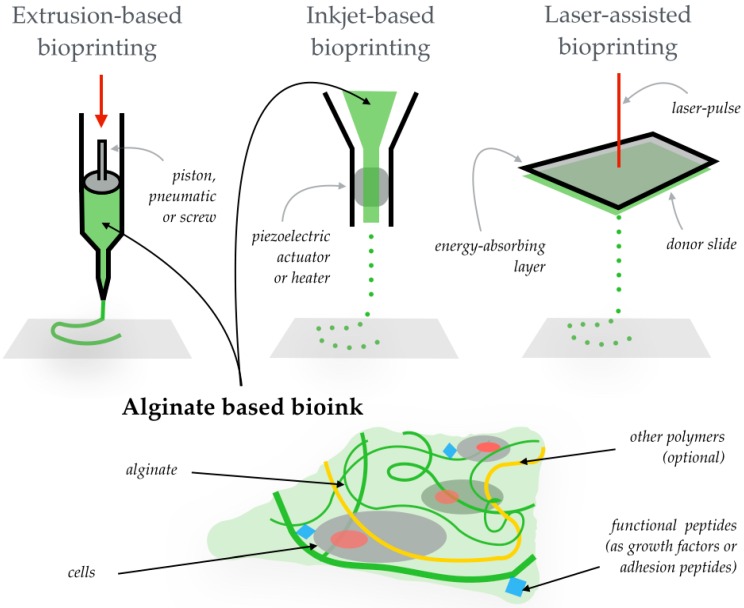Figure 1.
The most widely used bioprinting approaches are shown at the top of the illustration: extrusion-based (performed by a piston, as in the illustration, or by a pneumatic method or a screw), inkjet-based (by a piezoelectric actuator or a heater that creates bubbles) and laser-assisted (with a laser pulse on an energy-absorbing layer that discharges bioink droplets from a donor slide). On the bottom, an illustration shows an alginate-based bioink (composed of the alginate hydrogel, cells, and—optionally—functional peptides to enhance the biological function of the cells, and other polymers forming the hydrogel that tune certain properties (i.e., mechanical or structural) of the bioink and/or the printed three-dimensional (3D) construct).

